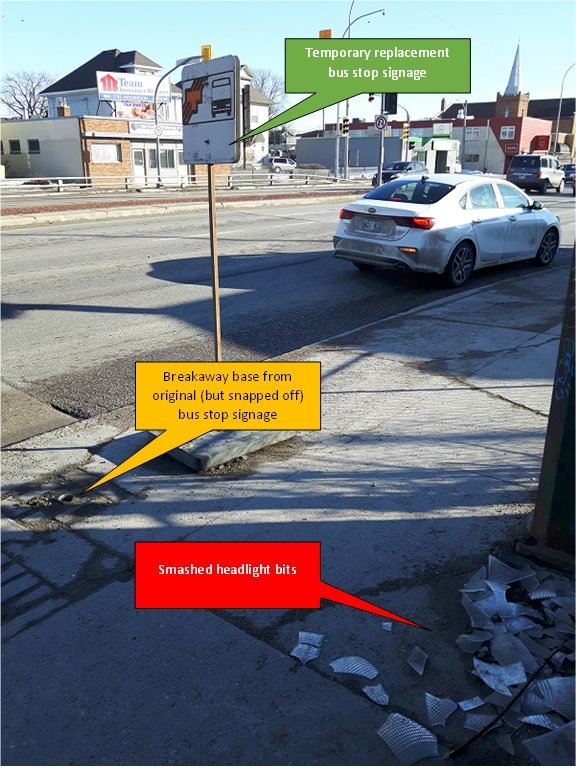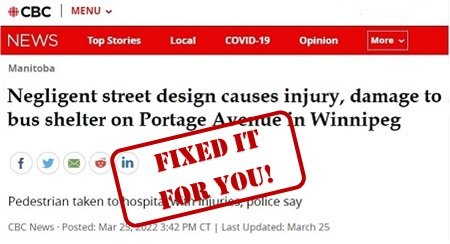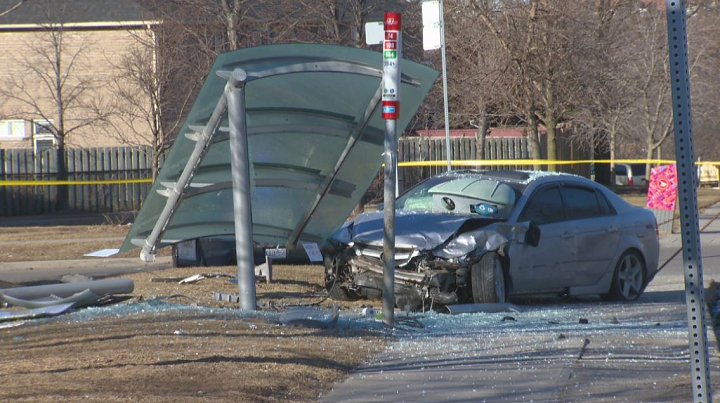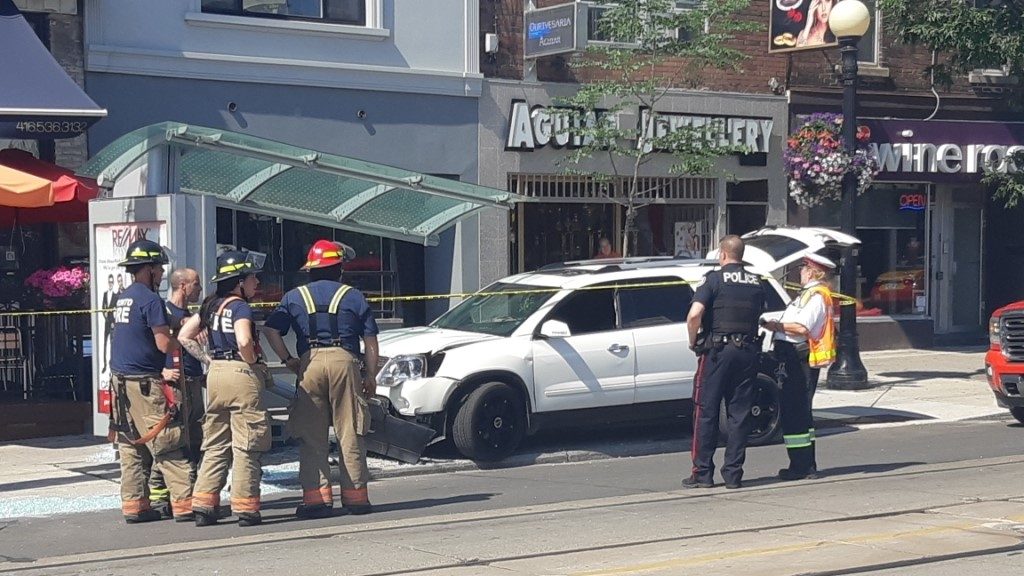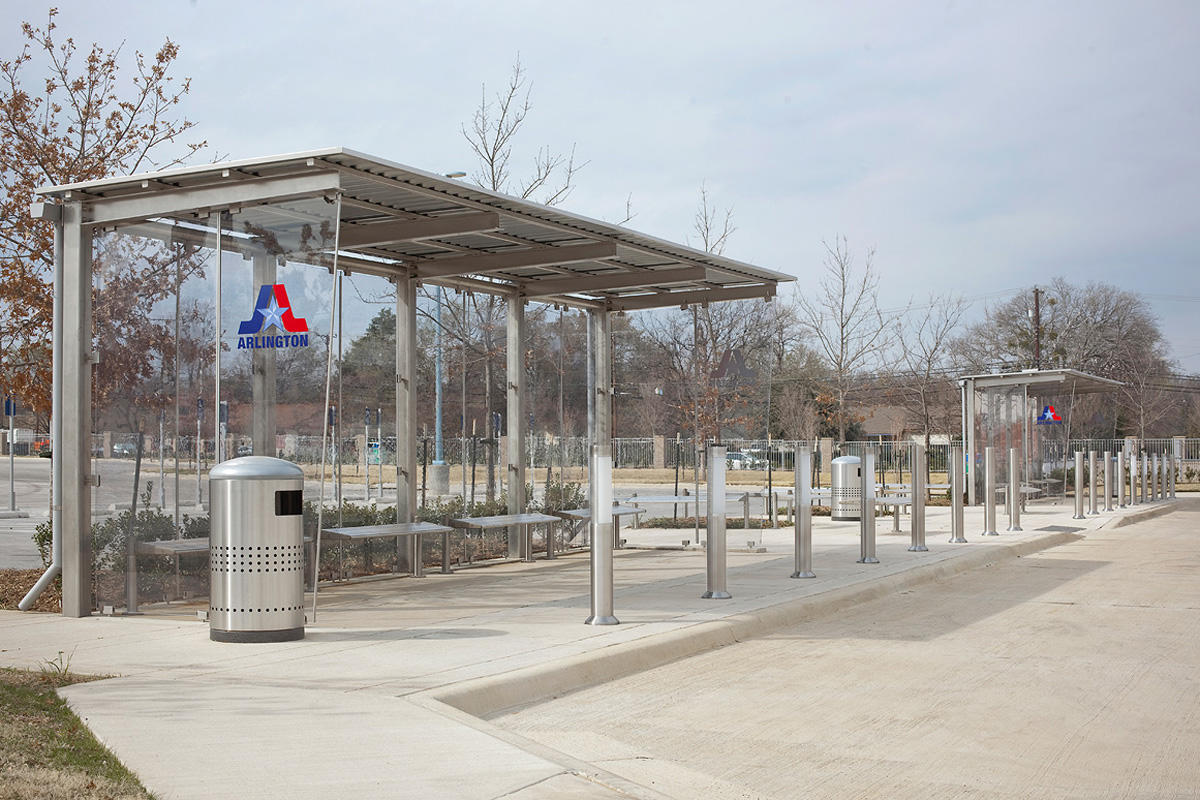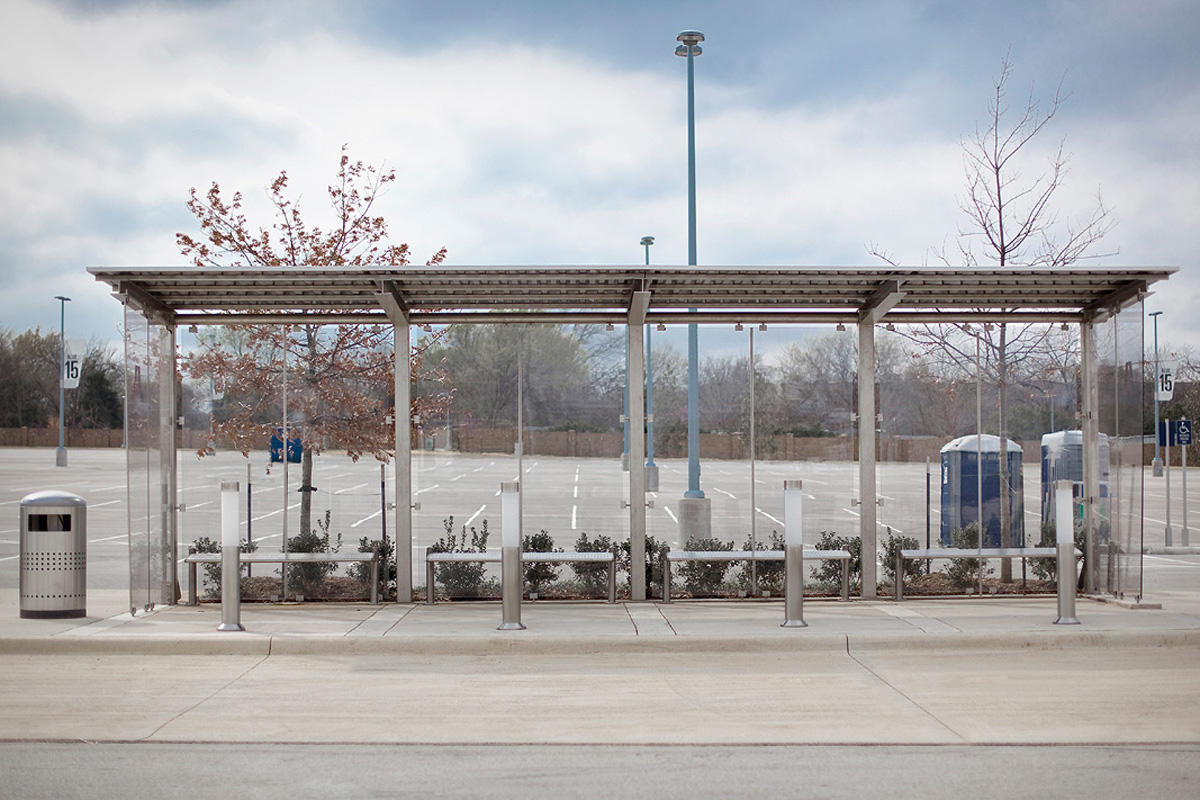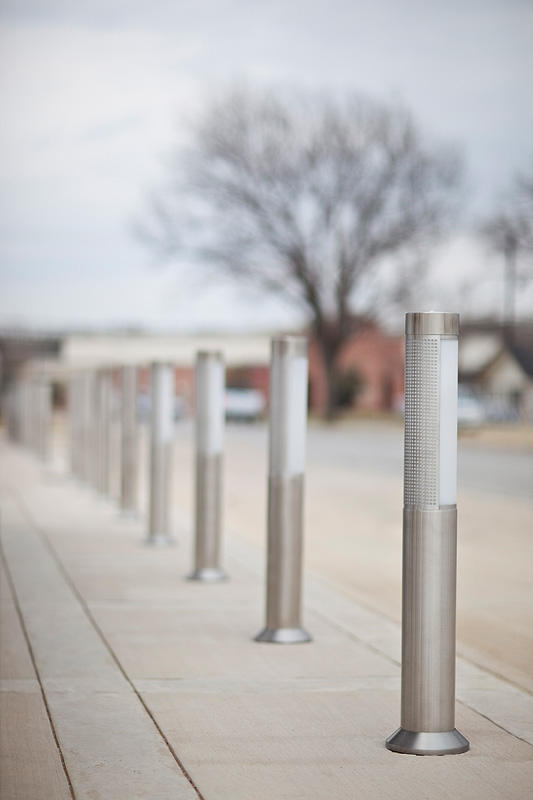And the only reason it’s not even worse is
because of congestion. Congestion slows traffic to a speed where clear zones shrink to zero, which solves this entire problem for us. Unfortunately, the traffic engineering profession seems to have taken it as its
raison d’être to alleviate congestion, which just puts people back into the clear zone, and back
into mortal danger.
But, try talking to a traffic engineer about making sure people aren’t forced to walk, wait for the bus, or access local businesses while in the clear zone, and you’ll get blank stares.
You could call it unethical. You could call it
gross negligence. I might even go as far as to call it
sociopathic.
And it is probably at least some of those things.
But it’s not like there’s no solution here. A common suggestion is to line the sidewalks with bollards.
And that would work… for the pedestrians and transit riders. But remember the whole reason for the breakaway bases? That vehicles smashing into immovable objects at high speeds is dangerous for the occupants of those vehicles?
Yeah, simply installing a bunch of bollards and calling it a day is just shifting the risk of death from people outside vehicles to those inside vehicles. That’s hardly ethical either.
But we could design our streets for slower speeds, just like congestion has shown us works. That’s actually what the World Health Organization recommends, and not just in residential areas. They recommend maximum speeds of 30 km/h wherever “
people and traffic mix“. It’s a policy that recognizes that there are places for high speeds, and there are
places for slow speeds. And the places for slow speeds are wherever people walk, live, work and play, which has advantages far beyond just safety, such as
economic activity, climate action,
livability, and as we’ve measured here before many times,
financial sustainability for the City.
To do otherwise is to ask people to spend time in the clear zone, literally putting their lives at risk just to wait for a bus, or buy a jug of milk, or walk to the dentist. An ask so egregious, that any engineer who would agree to affix their seal to that should lose their license to practice. Yet somehow they don’t.
Because most people don’t know about clear zones and breakaway bases. So there’s no one to call them out on it.
But now
you know.
So the next time you’re walking down the street, or waiting for a bus, or walking up to a local shop, and you walk by a pole with a breakaway base, remember that means you’re standing where out-of-control cars have been designated to go: in the clear zone.





